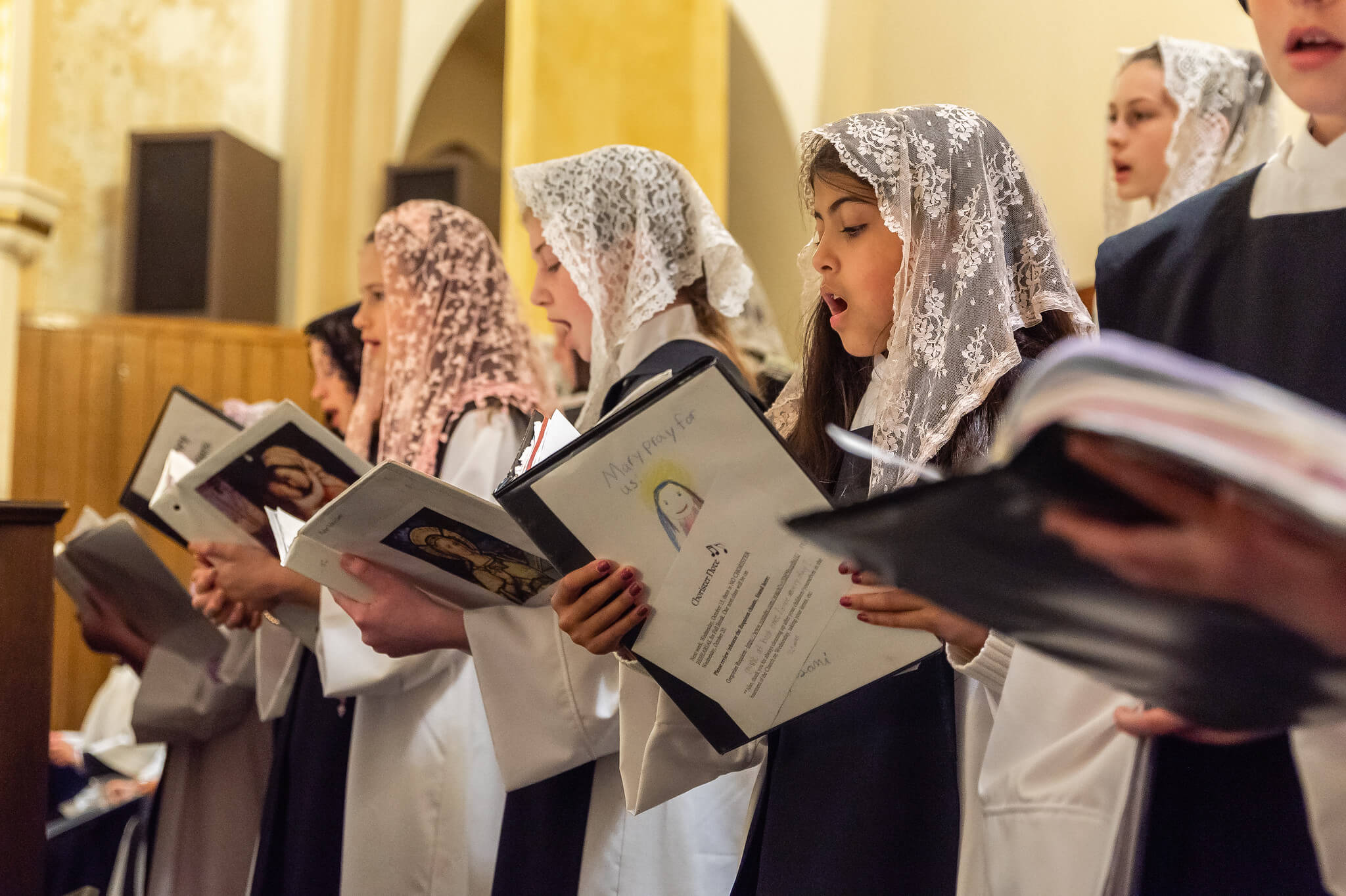Biretta Books has recently published 5 Alternatim Masses composed by OnePeterFive contributor Massimo Scapin: Missa “Orbis factor,” Missa Adventus et Quadragesimae, Missa “Lux et origo,” Missa “Iesu redemptor,” Missa primitiva. Mr. Scapin is the director of liturgical music at St. John Cantius in Chicago, Illinois.
Contemporary choral literature for the use of basic musical associations is often a prisoner of stereotypes of an aesthetic-linguistic nature which limit its functionality in the liturgy and in the performance. The presumed obligatory nature of writing for 4 mixed voices, in particular, as a guarantee of academic authority, risks being a concrete obstacle to the performance capabilities of choral ensembles, often characterized by a limited and not always stable staff. The artistic contribution by Massimo Scapin manages to happily combine the adherence to the classical and Roman polyphonic tradition, which recognizes in Gregorian chant — “specially suited to the Roman liturgy” — its own cultural and stylistic roots, with a practicality of use that is the prerogative of absolutely ordinary musical and vocal skills.
The choices adopted by Scapin in the five Masses, dedicated respectively to different seasons of the liturgical year, wisely exploit some salient features of the characters that this musical form has manifested in its historical evolution. The first structural element constantly adopted is that one of the multiple alternation (hence alternatim) between phrases in Gregorian chant and the subsequent polyphonic part of the Ordinarium Missae, as well as between the latter and the interventions in unison of the praying assembly. This option, placed in the cadential phases of the main melodic profiles, is particularly significant for the purposes of an effective relationship between the schola cantorum and the faithful, almost always bypassed in contemporary liturgical practice by homophonic masses or sad exclusions from the assembly.
Another element that corroborates the intention of making opportunities of contrapuntal writing functionally accessible is the choice of reducing the polyphonic fabric to two mixed voices compared, as mentioned above, to the canonical four. Scapin has therefore foreseen two lines dedicated, one to the female voice and the other to the male one, using, respectively, the most statistically detected textures in the average vocality: mezzo-soprano/alto and baritone. Such a choice implies the involvement of middle and comfortable registers, far from those which, due to a vocality not sufficiently educated from a technical point of view, are identified as anxious roughness and harbingers of bad sound emissions. All this set of tricks, which denote a deep knowledge of basic choral practice, finds its stylistic collocation in a language consciously suspended between the modality of Gregorian ancestry and that tonal gravitation, constituting the center of gravity of the musical experience of those, who are on average exposed to the soundscapes of everyday life. Finally, the constant presence of the organ assumes a precious role of rhythmic-harmonic support, perfectly consistent with the context just outlined.
This publication, therefore, can legitimately act as a reference model for those who intend to contribute to the definition of a sustainable liturgical-polyphonic repertoire and, of course, for choral groups looking for new and significant musical experiences.


